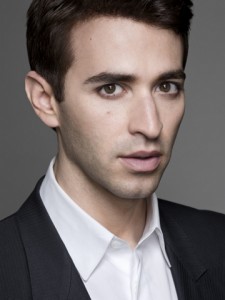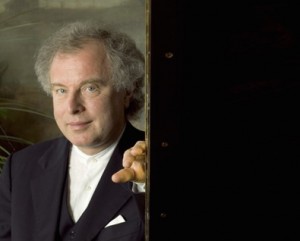Program Notes: Augustin Hadelich
Robert Schumann: Violin sonata no. 1 in A minor, Op. 105
Schumann wrote both of his completed sonatas for violin and piano in 1851. His wife Clara played the piano parts at their public premieres with violinists Ferdinand David (No. 1 in 1852) and Joseph Joachim (No. 2 in 1853). Though frequently recorded, these sonatas are only occasionally heard in the concert hall. The violin part tends to remain in the lower range where it merges, rather than contrasts, with the piano’s sonority; the upper range of the violin is seldom exploited; thematic ideas within the sonata-form movements are not always clearly differentiated; and not every movement is free from mechanical repetitiveness. But counterbalancing these qualities are Schumann’s often passionate themes, poetic ideas, rich textures and rhythmic urgency that contribute many inspired moments to the music.
The A minor sonata exemplifies many of these assets well in its opening bars. Instructed to play “with passionate expression”, the violinist plunges headlong into a sweeping theme full of romantic yearning and grand gestures. The second movement opens with a capricious but sunny principal theme that alternates with two short episodes, the first soulful, the second bustling. The turbulent, agitated mood returns in the finale. Violin and piano chase each other through a skittish first theme, whose rhythmic pattern pervades the entire movement. The second theme brings with it a measure of lyrical respite, but we are never far from the almost overbearing presence of the staccato rhythmic pattern.
Toru Takemitsu: From Far Beyond Chrysanthemums and November Fog
When Toru Takemitsu died seventeen years ago, the world lost one of its greatest composers of the late twentieth century. The enormous list of prestigious commissions, honours, awards and prizes he received (including the $50,000 Glenn Gould Prize in Ottawa in 1996) attest to his stature as one of the preeminent musical figures of our time. Takemitsu’s great achievement was to synthesize with a high degree of success aspects of both Western and Oriental esthetics and techniques. A preoccupation with timbres, textures, colours and evanescent sonorities is the hallmark of Takemitsu’s style, while freely evolving musical material, contemplative moods and a sensation of quasi-spatial experience inform most of his music. In addition, there is a sense of profound reserve and self-control in this music, which is often dreamy, sensuous, delicate and imbued with a huge palette of delicate pastels. The title From Far Beyond Chrysanthemums and November Fog (1983) comes from a stanza of a poem entitled “In the Shadow” by the Japanese poet Makoto Ooka. Takemitsu exploits the idea of “shadow” in the music by using what he calls six “dominant” pitches and six “shadow” pitches.
Maurice Ravel: Tzigane
It was through the Hungarian violinist Jelly D’Aranyi that Ravel became acquainted with gypsy music; he found it so fascinating that he determined to write a piece in this style for her. Two years later, he produced the Tzigane (French for gypsy, and related to the German Zigeuner), modeled after the freely structured Hungarian Rhapsodies for piano by Liszt. D’Aranyi and Ravel gave the first performance in London on April 26, 1924. The violin part was phenomenally difficult, and d’Aranyi had only a few days to learn it, but such was her mastery that Ravel remarked: “If I had known, I would have made the music still more difficult.” That July he transcribed the piano part for full orchestra.
The work opens with a long, unaccompanied presentation of the melodic material by the solo violin. In the course of a freely rhapsodic succession of ideas employing the so-called gypsy scale, the instrument indulges in all manner of virtuosic effects, including harmonics, double, triple and even quadruple stops.
Leoš Janáček:Violin sonata
Janáček’s music is steeped in the folk music idioms and speech patterns of his Moravian homeland, located in the north central region of what was formerly Czechoslovakia. “The whole life of man is in folk music,” he proclaimed. Hence, it comes as no surprise to find that this composer’s melodic material, both vocal and instrumental, follows closely the inflections, cadences and rhythms of the Czech language, and that he developed a uniquely expressive style.
Janáček left just one violin sonata, which he wrote in his sixties. (His two student works in the genre are lost.) “I wrote it at the beginning of the War when we were expecting the Russians in Moravia,” he declared. This was meant in a positive sense, for Janáček was counting on the Russians to liberate his country from the yoke of the Hapsburgs. Some listeners hear the sound of gunfire evoked in the final movement. Evocations of Russia can also be detected in the first and third movements, where the tone and melodic shapes resemble certain passages in Janáček’s opera Katya Kabanova, whose story comes from a Russian drama (The Storm by Ostrovsky). The sonata went through several transformations before arriving at its final form in 1922. The premiere was given that year in Brno by František Kudlaček and Jaroslav Kvapil.
André Previn: Tango, Song and Dance
André Previn unquestionably ranks among the most talented, versatile and best known musicians of our time. Now approaching his 82nd birthday, he sits comfortably at the pinnacle of numerous professions: as orchestrator (a service he was already providing MGM Studios back in high school), arranger, jazz pianist (as such he began recording in the days of 78s), classical pianist, conductor, television host, composer of film scores, author (of his memoir No Minor Chords) and composer of classical music.
Previn composed Tango, Song and Dance in 1997 as a set of lighthearted virtuoso pieces for violinist Anne-Sophie Mutter. She and the composer gave the first performance on August 26, 2001 in Lucerne. Previn writes that in the first movement “the clustered harmonies are not terribly far removed from the sound the traditional accordion makes.” In the Song, “the violin predominates throughout, and the accompaniment is simple and direct.” Of the Dance, Previn notes that “I doubt whether dancers would be happy keeping time to this, but of course for two instrumentalists it becomes a good deal easier.”
Program notes by Robert Markow, 2013.




